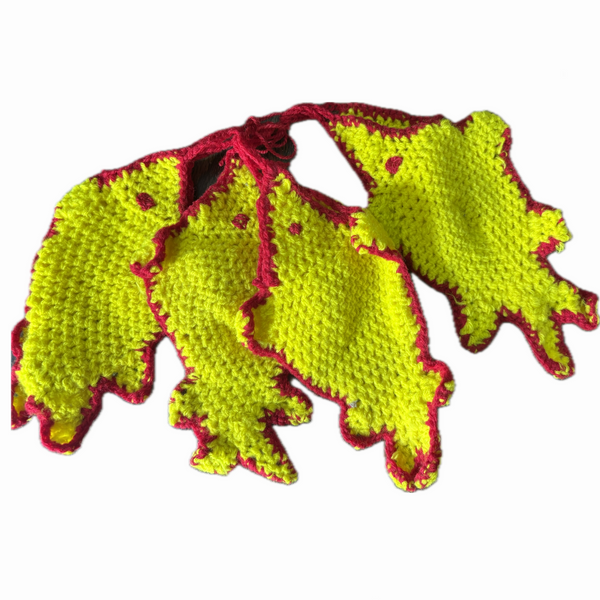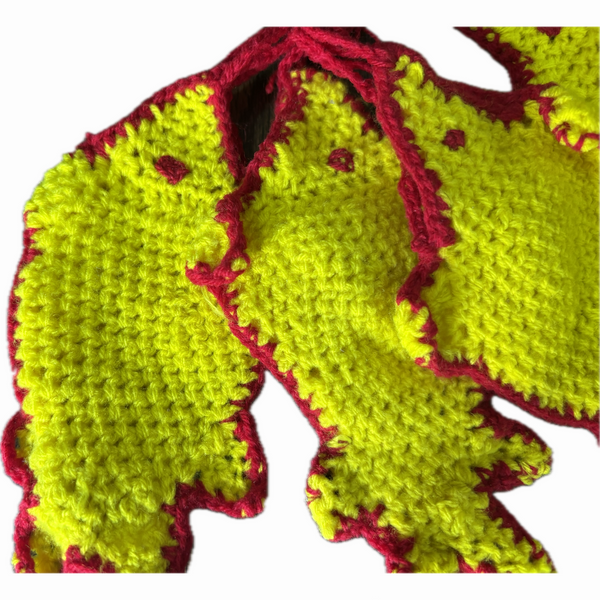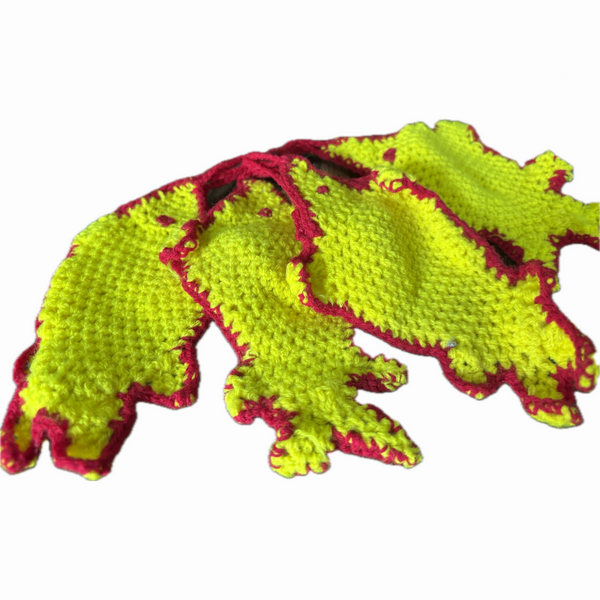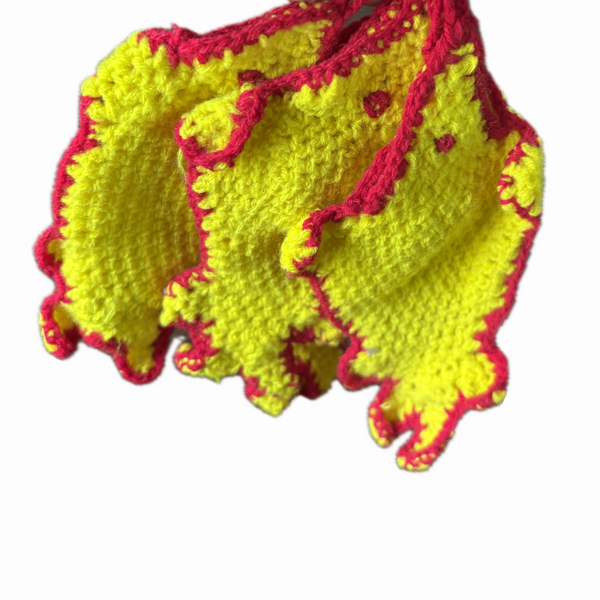
Mithila Famous handmade Khootak Jhaba
Tax included
Free Shipping on All Orders.
Express shipping by
Details
- Type: Traditional newborn baby wear (Khootak Jhaba)
- Material: Soft wool yarn, hand-knitted
- Design: Fish-shaped yellow base with red crochet borders
- Craftsmanship: 100% handmade by Mithila artisans
- Usage: Ideal for newborn babies, cultural gifting, or as a keepsake of Mithila tradition
About the Artwork
The Khootak Jhaba is a beloved symbol of Mithila’s folk tradition, especially crafted for newborns as a token of blessings and protection. Handmade in vibrant wool with fish-shaped crochet patterns, it carries deep cultural symbolism—the fish in Mithila art represents prosperity, fertility, and continuity of life.
Every stitch reflects love, care, and heritage craftsmanship, making it more than just clothing—it’s a cultural heirloom passed through generations. This unique piece is often gifted to newborns during traditional ceremonies, representing warmth, safety, and good fortune.
Shipping & Returns
Orders are processed and shipped within 3 business days. For more information, please refer to our Shipping Policy and Returns Policy pages.
Madhubani Painting Historical Context
Madhubani Painting, also called Mithila Art or Mithila Painting, is a traditional folk painting from the ancient Mithila region of Bihar, India. Known for its vibrant colors and intricate patterns, it is considered more than decoration—it brings blessings, protects against evil, and honors the Gods.
Origins & History
- Dates back to Treta Yuga, the era of Lord Rama.
- Celebrated in mythology: During Sita’s marriage with Lord Rama, Mithila was adorned with Madhubani paintings reflecting celebration, courage, and divine blessings.
- Preserved for centuries as a symbol of Bihar’s cultural heritage.
Styles of Madhubani Painting
Practiced by different sects, historically categorized into five main styles:
- Tantrik – Mystical symbols and deities
- Kohbar – Love, marriage, and fertility rituals
- Bharni – Bold, richly colored motifs
- Godna – Inspired by traditional tattoo patterns
- Katchni – Minimalist line drawings with fine detailing
Materials & Techniques
- Canvas: Walls, floors, cloth, handmade paper—no fixed dimensions.
- Colors: Natural pigments from flowers, leaves, fruits, and roots.
- Artists never erase mistakes, believing correction is inauspicious.
- Symbolism:
Fish → Fertility & good luck
Peacock → Love & religion
Serpent → Divine protection
Cultural Importance
- Madhubani paintings reflect Mithila’s mythology, rituals, and daily life.
- Rich in symbolism, each artwork represents spiritual and cultural stories.
- Considered a treasure of Indian folk art and Bihar heritage.
Geographical Roots
- Country: India
- Region: Mithila, Bihar
Contact Us
Have questions or want to chat with us? Feel free to reach out: Contact Us












